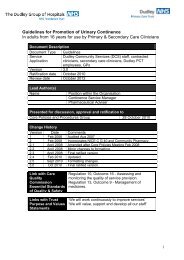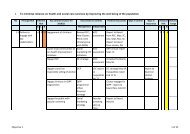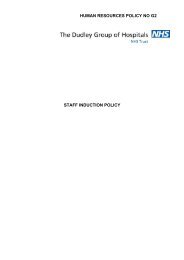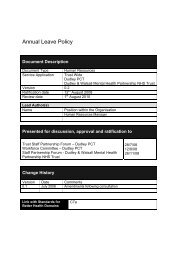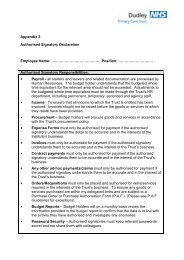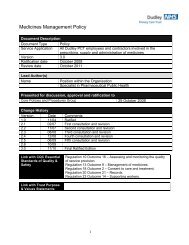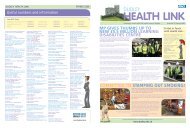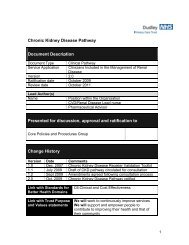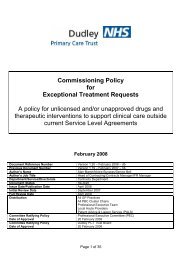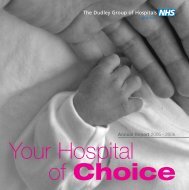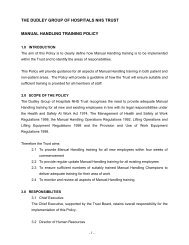Dudley Strategy for Tackling Health Inequalities 2010-15
Dudley Strategy for Tackling Health Inequalities 2010-15
Dudley Strategy for Tackling Health Inequalities 2010-15
- No tags were found...
You also want an ePaper? Increase the reach of your titles
YUMPU automatically turns print PDFs into web optimized ePapers that Google loves.
8.6 THE PREVENTION ROLE OF THE ACUTE SECTORBACKGROUNDHospitals are places where secondary care, either planned or emergency, isdelivered. The role of a hospital in prevention is not often considered. There is aninternational movement of „health promoting hospitals‟ around the world that hasgenerated some excellent models of good practice, working with departments insidethe hospital and a wide range of partners inside and outside the hospital to improvehealth and prevent readmissions.Hospitals and health services may be sources of inequalities themselves if they don‟tadapt their own functioning and services to the specific needs of different staff,patient and community groups. However they have the potential to mitigate some ofthe negative health effects caused elsewhere by reducing thresholds to care and byoffering health education to improve the health literacy of disadvantaged groups.They also have the potential to act as advocates <strong>for</strong> their patients and mediatechange amongst partner agencies by engaging in partnerships to improve health.Since the health sector is one of the largest employers in the borough they can alsocontribute to reducing health inequalities through employment opportunities andpromoting the health and well being of all their staff.Many doctors focus on treating the symptoms of ill health they are presented withand are not making the connections necessary to have an impact on reducing theinequalities gap. The immediate causes of the social gradient in ill health, such assmoking, obesity and alcohol misuse are either overlooked by clinicians or left in thebelief that they will be picked up by public health professionals. There is goodevidence that brief advice delivered by a clinician can have an impact on healthbehaviour and those patients attending GP surgeries or hospital appointments areparticularly receptive to such advice.CURRENT POSITIONThe NST report identified that the NHS Foundation Trust could play a bigger role inreducing health inequalities in <strong>Dudley</strong> and should take a more proactive role inleadership and partnership in this agenda. Since the visit there has been a change inmanagement at <strong>Dudley</strong> Group of Hospitals (DGoH) and this has resulted in moreinvolvement in key partnership and strategic groups and of most relevance here, the<strong>Health</strong> Improvement and Modernisation Management Team (HIMMT) and the <strong>Health</strong>and Wellbeing Partnership Board.DGoH is already offering quit smoking support through a „stop be<strong>for</strong>e the op‟programme and also support to quit smoking <strong>for</strong> pregnant women. There areopportunities to take this approach further by offering identification and brief advice<strong>for</strong> both tobacco and alcohol consumption through CQUIN targets being developed<strong>for</strong> 2011.Currently negotiations are taking place to enable the acute trust to become theprovider of some community services. This will provide a unique opportunity todevelop the public health role of its staff and provide robust links with the community196




